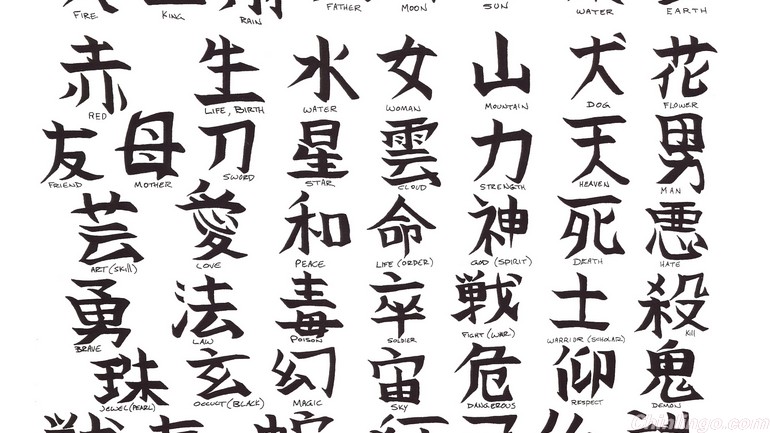
This post is taking things in a different direction, and showing some of the most unusual simple characters. Some of these characters hardly look like Chinese words, but they do look exactly like their meanings.
“Weird” is certainly subjective, and native speakers of Chinese might not find these characters at all unusual, but many Chinese learners would be given pause if they encountered these odd characters.
丫- yā
This three-stroke character means “bifricate” or “fork.” Not hard to fathom how ancient Chinese people came up with this character. 丫features in words like 丫杈(yā chà, the fork of a tree branch.)
凹凸 –āotū
Together, these characters means “bumpy” or “uneven.” 凹 on its own means “concave” or “sunken” and 凸 means “convex” or “protruding.” Who says Chinese is a difficult language?
孑孓- jiéjué
孑孓 is comprised of two 了 radicals with a wiggly line on each one, as if 子 (zi) decided to cut loose a little. Together the characters in 孑孓 means “maggot” or a “wiggler.” Originally, 孑 means a person missing their left arm (link in Chinese), and 孓 meant missing their right arm. 孑 also appears in the chengyu 孑然一身, where it means “lonely” or “to be alone in the world.”
屮- chè
Nope, this isn’t the character for pitchfork. 屮 is a rarely used character for plants sprouting.
孖 – zī or mā
孖 is made up of two 子 (child) radicals next to each other. The meaning here is simple – twins! 孖 is infrequently used compared to 双(shuāng, double.)
卍- wàn
For Western audiences, this character can be emotionally charged, but 卍 is an ancient symbol in Buddhism, meaning unchanging or eternity. (Hitler stole it from the Buddhists.) Literally, the meaning of this character is the symbol itself. It was codified into an official character and given its pronunciation by China’s only female emperor. Used in text, it tends to mean “auspicious symbols.” One of the most famous examples of its use was in the classic novel, Dream of Red Mansions ”流雲卍福花樣的” – “designs with floating clouds and patterns of wàn and good fortune characters.”
囟 – xìn
This character originally had a specific medical usage. When babies are born their skulls aren’t fully formed, and 囟 refers to the gap in babies’ skulls. The gap is roughly X shaped or cross shaped along the center of the skull, so if you’re a doctor or have medical knowledge, this character actually resembles the real-life phenomenon.
彳亍 – chì chù
彳亍 looks like the radicals of 行 had a bad breakup, but these character actually have their own meaning together, “walk slowly.” Used mostly in formal or artistic contexts, “彳亍” was the titled of a recent exhibition by a master abstract artist in 798 Art District, giving attention to these obscure characters.
卜 – bǔ
The meaning of this character is “to divine” or “to tell fortunes” (占卜) and it goes back to some of the oldest recorded instances of written Chinese. In a highly simplified form, 卜 depicts an oracle bone breaking – an ancient method used to tell the future. 卜 is more commonly used as a radical for well-known characters like 不 (bù, negation)
弋 – yì
This is one of many characters which lost part of its meaning when it was simplified. 弋 was originally just a radical in 隿, with a bird radical (隹) on the right. Together, they represent a small stake where one would hang an animal carcass, and a bird – bird hunting! The meaning of this character today is “to shoot.”



 闽公网安备 35020302035673号
闽公网安备 35020302035673号
0 responses on "Some "weird" characters in Chinese"